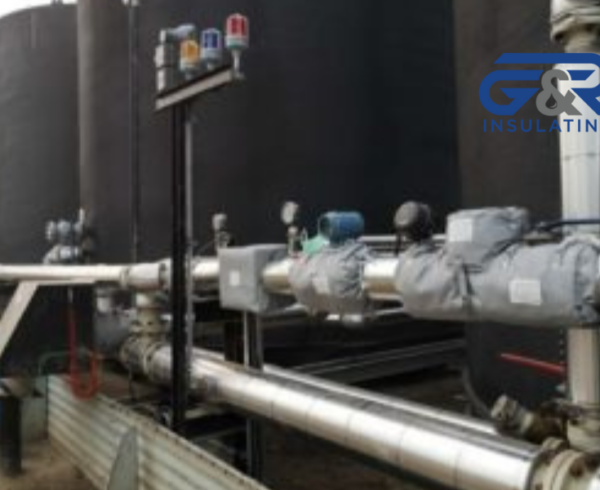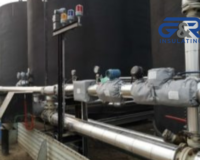Scaffolding helps workers reach high places safely in construction. One common type is tube and clamp scaffolding. It’s strong, easy to bend, and simple to build. If you’re new to construction or just curious, learning how tube and clamp scaffolding works can be helpful. Let’s explore it!
What is Tube and Clamp Scaffolding?
Tube and clamp scaffolding is a temporary structure used to help workers in construction. It consists of tubes (pipes) and clamps (metal connectors) that hold the tubes in place. Workers use this scaffolding to reach high spots safely while they work on building or repairing structures.
The system works by connecting the tubes to form a stable frame. The clamps lock the tubes in place, creating a solid and secure platform for workers. This type of scaffolding can be built to any height and is very versatile, making it useful in many types of construction projects.
Why Choose Tube and Clamp Scaffolding?
There are many reasons why construction teams choose tube and clamp scaffolding. Here are the most important benefits:
Strong and Reliable Support
The tube and clamp scaffolding are very strong. The tubes are made of steel, and the clamps hold them tightly together. This makes the scaffolding stable and able to support workers, tools, and other equipment. Because of its durability, this type of scaffolding is often used in projects that need a lot of support, like high-rise buildings.
Flexible and Customizable
One of the best things about tube and clamp scaffolding is its flexibility. Workers can cut the tubes to different lengths and adjust the scaffolding to fit any project. They can set it up in various shapes and sizes, making it perfect for complex jobs.
Easy to Set Up and Take Down
Tube and clamp scaffolding is also easy to assemble and disassemble. The clamps are simple to use, and the tubes connect quickly without the need for welding or other complicated steps. This saves much time on a construction site, especially when workers need to move or change the scaffolding.
Safe for Workers
Safety is a top priority on any construction site, and tube and clamp scaffolding help protect workers. The structure is designed to be secure, with tightly connected clamps and stable tubes. Workers can move around freely while staying safe, knowing that the scaffolding is sturdy and reliable.
How Tube and Clamp Scaffolding Works
Building tube and clamp scaffolding involves connecting a few basic components. Here’s how it works step by step:
- Tubes: The tubes are the main support structures. They are made from steel and come in different lengths. Workers use the tubes to create the framework of the scaffolding.
- Clamps: The clamps are used to connect the tubes. They lock the tubes into place, making the structure sturdy and secure. Clamps come in different shapes, such as right-angle clamps (to form corners) and swivel clamps (to adjust the angle).
- Base Plates: Base plates are placed on the ground to support the tubes. They help distribute the weight of the scaffolding evenly and prevent it from tipping over. Base plates are especially important when setting up scaffolding on uneven ground.
- Boards: Once the frame is built, boards are placed across the tubes to create platforms where workers can stand. These boards help ensure that workers have a stable and safe surface to work from.
- Braces: Braces are used to strengthen the scaffolding and prevent it from swaying. They are placed diagonally between the tubes to add extra support, making the structure even more stable.
Types of Tube and Clamp Scaffolding
There are several ways to use tube and clamp scaffolding, depending on the needs of the project. Some of the most common types include:
Independent Scaffolding
Independent scaffolding is a free-standing structure. It doesn’t rely on a building for support, which makes it ideal for projects that don’t have walls or structures to attach to. This type of scaffolding is commonly used in large-scale construction projects, such as bridges or oil rigs.
Putlog Scaffolding
Putlog scaffolding is connected to the building. One end of the tube rests on the wall of the building, while the other end is supported by a base plate on the ground. This kind of scaffolding is usually used to build or fix walls.
Suspended Scaffolding
Suspended scaffolding is used for projects where workers need to work at height but can’t use traditional scaffolding. The scaffolding is hung from ropes or cables, so workers can lift it up and down the building. This type is often used for cleaning windows or working on high-rise buildings.
Tube and Clamp vs. Other Scaffolding Systems
| Feature | Tube and Clamp | System Scaffolding | Frame Scaffolding |
| Flexibility | High | Moderate | Low |
| Assembly Speed | Fast | Moderate | Fast |
| Stability | High | Moderate | Moderate |
| Cost | Moderate | High | Low |
| Applications | Versatile | Limited | Limited |
Benefits of Tube and Clamp Scaffolding in Construction
Tube and clamp scaffolding is an essential tool for many construction projects. Here are a few key reasons why it’s so useful:
- Versatility: Because tube and clamp scaffolding can be customized for any project, it’s ideal for use in a variety of settings. Whether you’re working on a small repair job or a large commercial project, tube, and clamp scaffolding can be adjusted to meet your needs.
- Cost-Effective: Compared to other scaffolding systems, tube, and clamp scaffolding can be more affordable. The materials are easy to find, and the scaffolding can be reused on multiple projects. This can help save money in the long run.
- Durability: Tube and clamp scaffolding lasts a long time. The steel tubes can withstand harsh weather and heavy use. This durability means that the scaffolding will continue to perform well over time, even in tough conditions.
FAQs About Tube and Clamp Scaffolding
-
What is tube and clamp scaffolding used for?
Tube and clamp scaffolding is used for construction, maintenance, and repair projects. It provides a stable platform for workers to reach high areas safely. -
Why is tube and clamp scaffolding popular?
It’s popular because it is strong, flexible, and can be built in different shapes and sizes to fit various projects. -
How is tube and clamp scaffolding assembled?
Workers connect steel tubes using clamps to create a sturdy frame. No welding is required, making it easy to set up and take down. -
Is tube and clamp scaffolding safe?
Yes, when properly installed and inspected, it provides a secure working platform. Safety measures like guardrails and harnesses should always be used. -
Where is tube and clamp scaffolding commonly used?
It is used in high-rise construction, industrial projects, shipyards, and bridge work due to its strength and adaptability.
Conclusion
Tube and clamp scaffolding is a great choice for many construction projects. It’s strong, flexible, and easy to use, making it perfect for all kinds of jobs. Whether you’re building a skyscraper or making repairs to a smaller structure, this type of scaffolding offers great benefits. It provides the safety, support, and stability needed for high-quality work.
If you’re working in the construction industry in Alberta, it’s important to use reliable scaffolding systems like tube and clamp scaffolding. For projects that also need insulation services, you can trust G & R Insulating and scaffolding for high-quality insulation services in Alberta. Contact us today to learn more about our services!
















